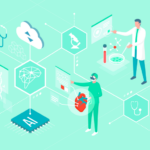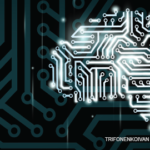Machines cannot help us make this choice; it is up to us.
Integrating AI Holistically
This brings us to our next point: For AI to be truly effective in rheumatology clinics, AI-powered tools must be integrated in a manner that respects and enhances the entire diagnostic and care continuum. Holistic integration means designing AI tools that complement the clinician’s workflow, enhancing our ability to deliver patient-centered care without fragmenting or complicating the treatment process. This is easier said than done.
The diagnostic process is more than what happens in a clinic room between a clinician and a patient. The National Academies of Sciences, Engineering, and Medicine, in conjunction with the Society to Improve Diagnosis in Medicine, published a schema outlining the diagnostic process, which starts when a patient experiences a health concern and ends, broadly, with outcomes for the patient and for the system.5 It’s vital that AI not just be wedged into one small element of this diagnostic process, but be integrated seamlessly through the entire process.
Once more, the experience of the electronic health record system is edifying. Once relegated to writing and reading notes, the EHR has now grown to become a sprawling platform that encompasses virtually all elements of patient care, often at the expense of human-centered care. I contend that, unless carefully designed, artificial intelligence will do much the same.
Looking for Human-Centered AI
It goes without saying that AI solutions in rheumatology should not adopt a one-size-fits-all approach. Instead, they must be tailored to fit the specific needs of each clinical setting. This customization requires active input from clinicians, patients and many others who understand the unique challenges and needs of their practice environments. By aligning AI tools with these specific requirements, we can ensure AI can be a useful adjunct to enhance clinical practice.
The issue of culture must be addressed here. Large language models (LLMs) are a major component of modern AI tools. But they carry with them, and reinforce, enormous, unmistakable biases.6 The language that AI tools embrace is the language of standardization and, broadly, of the elite. The richness of regional lexicons and the precision they carry are often lost in the data to create LLMs that are marketable beyond individual counties, states and countries. Worse yet, many of the biases intrinsic in language are left uncontested, perpetuating harm.
Even if they were somehow able to faithfully replicate our way of speaking and writing, AI tools in healthcare would be fundamentally misleading and manipulative.



